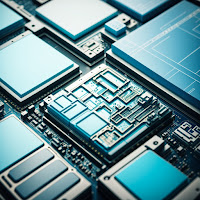Unraveling the Threads: Understanding Parallel and Concurrent Programming
Introduction
In today's tech-driven world, where speed and efficiency reign supreme, the concepts of parallel and concurrent programming have become pivotal in the realm of software development. These programming paradigms empower developers to optimize performance, enhance scalability, and exploit the full potential of modern computing systems. However, the terms "parallel" and "concurrent" are often used interchangeably, blurring their distinctive features. Let's delve deeper into these concepts to unveil their essence and understand their significance in shaping the landscape of software engineering.
Understanding Parallel Programming
Parallel programming involves the simultaneous execution of multiple tasks to enhance computational speed and throughput. At its core, it capitalizes on dividing a larger task into smaller, manageable sub-tasks that can be executed concurrently by utilising multiple processing units, such as CPU cores or computing clusters. This simultaneous execution accelerates the completion time of the overall task, harnessing the available resources efficiently.
The essence of parallel programming lies in exploiting the inherent parallelism within a problem. Tasks that exhibit independence or minimal dependencies can be executed concurrently, eliminating bottlenecks and maximising system utilisation. Common models used in parallel programming include shared-memory multiprocessing (SMP), distributed-memory computing, and GPU (Graphics Processing Unit) parallelism.
Concurrent Programming: Beyond Simultaneous Execution
Concurrent programming, on the other hand, deals with managing multiple tasks that may start, execute, and complete independently over time. Unlike parallelism, which focuses on simultaneous execution, concurrency emphasises the structure and composition of programs that handle multiple tasks potentially overlapping in execution.
Concurrency isn't solely about speeding up computation; it's about effectively managing tasks that might share resources, ensuring they run smoothly without causing conflicts or inconsistencies. This involves handling synchronisation, communication, and coordination among concurrent tasks to maintain program correctness.
Concurrency often finds its application in systems where multiple operations can progress in overlapping timeframes, such as web servers handling numerous requests simultaneously or operating systems managing multiple processes concurrently.
Key Differences and Relationships
One fundamental difference between parallel and concurrent programming lies in their primary objectives. Parallelism aims to accelerate computation by executing tasks simultaneously, leveraging hardware resources. Conversely, concurrency focuses on structuring programs to manage multiple tasks efficiently, which may or may not execute simultaneously.
It's crucial to note that parallelism is a subset of concurrency. While all parallel programs are concurrent, not all concurrent programs are parallel. Concurrent programs might handle tasks in a sequential manner but are designed to handle multiple tasks concurrently, facilitating better resource utilization and responsiveness.
Challenges and Considerations
Both parallel and concurrent programming introduce complexities that developers must address. Coordinating parallel tasks to avoid race conditions, ensuring data consistency, and managing resources without bottlenecks are challenges in parallel programming. Meanwhile, in concurrent programming, issues like deadlock, resource contention, and maintaining program correctness amidst asynchronous tasks are prevalent.
Moreover, debugging and testing parallel and concurrent programs pose significant challenges due to their non-deterministic nature, making it harder to reproduce issues consistently.
The Evolving Landscape
With the proliferation of multicore processors and distributed systems, the importance of parallel and concurrent programming continues to grow. The demand for software that can efficiently utilize available computing resources while providing seamless user experiences necessitates a deep understanding of these paradigms.
Frameworks and libraries that abstract the complexities of parallelism and concurrency, such as OpenMP, CUDA, and Go's goroutines, have emerged, easing the development process for programmers. These tools offer abstractions and APIs that simplify the implementation of parallel and concurrent systems, reducing the barrier to entry for developers.
Conclusion
In conclusion, parallel and concurrent programming are indispensable pillars of modern software development. While their objectives and methodologies differ, they both contribute significantly to enhancing system performance, scalability, and responsiveness.
Understanding the nuances between parallelism and concurrency is crucial for developers seeking to optimize their software for today's computing landscape. As technology continues to advance, mastering these programming paradigms will remain instrumental in creating robust and efficient software systems that meet the ever-growing demands of the digital era.




Comments
Post a Comment